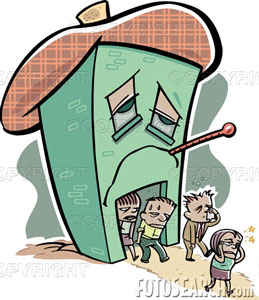Vapor Barriers Create Healthy Buildings 
Vapor Barriers are a very critical part of the building envelope. A vapor barrier is a membrane that prevents the moisture in the air outside from reaching the building’s interior space. It acts in association with the insulation to create a moisture-proof envelope. The most common material used as a vapor barrier is polyethylene plastic film. Other vapor barriers are also attached to batt or blanket insulation.
Purpose of Vapor Barriers
- Water can move through a building structure from where the air is moist and warm to the colder air. When the moisture hits cold air, it condenses. This condensation can seriously damage the structure and cause mold growth. A vapor barrier is needed to prevent this moisture from crossing over to the cold side of the structure.
- The vapor barrier also reduces air leakage. However, this does not reduce air leakage through wall openings like windows and doors.
Vapor Barrier Installation
As is evident from its functions, the vapor barrier needs to be installed on the warm side of the building envelope to be effective. Vinyl wall covering (wallpaper) on walls is also a vapor barrier. Condensation problems between the interior vapor barrier and original vapor barrier can occur. The resulting microbial growth is usually found on the drywall beneath the vinyl wall covering.
Crawl spaces with water problems require vapor barriers on top of the dirt floor. Sump pumps and additional vents may also be needed.
Moisture control is a major concern associated with installing thermal insulation. The warm air inside your house contains water vapor. If this vapor passes into the insulation and condenses, it can cause significant loss of insulating value and promote mold growth.
Ventilation
Sufficient ventilation in the house is also important in controlling moisture in a building. This is particularly important in the basement, crawl space, and attic. Besides controlling water vapor, proper ventilation reduces the build-up of gasses such as carbon dioxide which is produced during respiration and fuel combustion.
Humidifiers
The use of humidifiers is not recommended, as most homes in the Mid-West do not need additional humidification. If the humidifier is not properly maintained, other health problems can occur. Venting clothes dryers into the house may also cause problems such as excess humidity and condensation.
Turn-Key can help you access all factors that affect the healthy environments.


